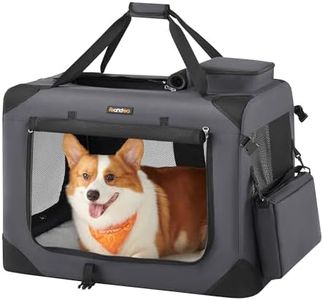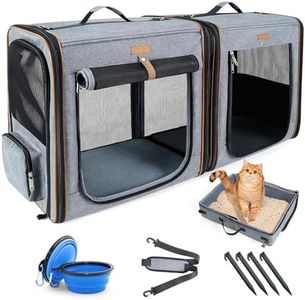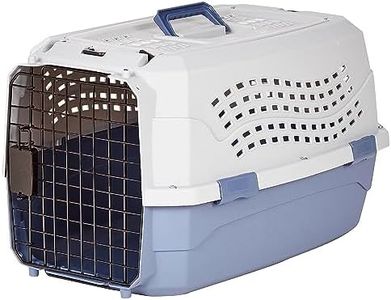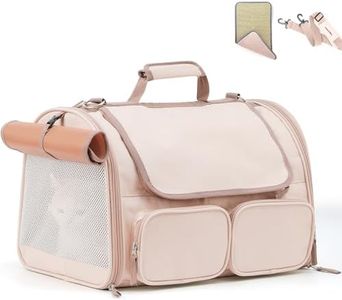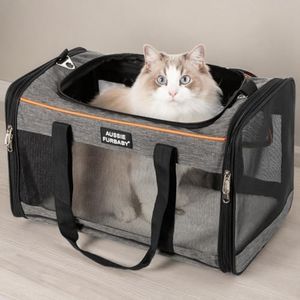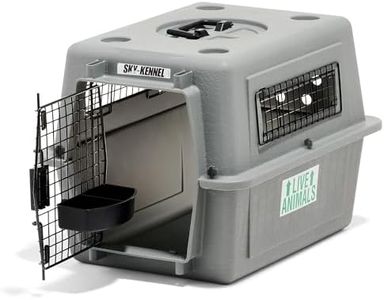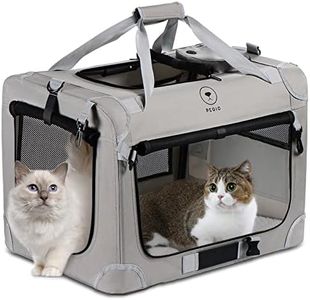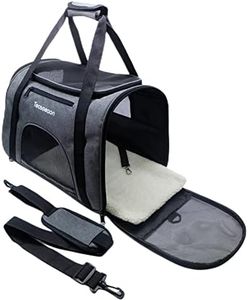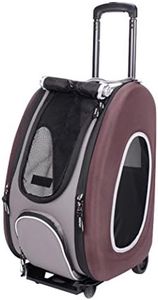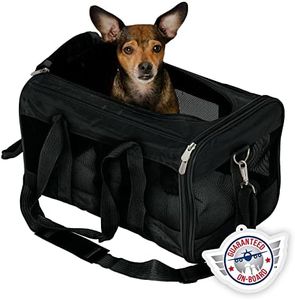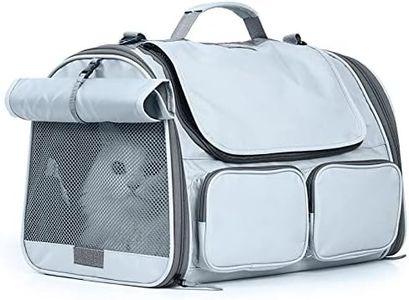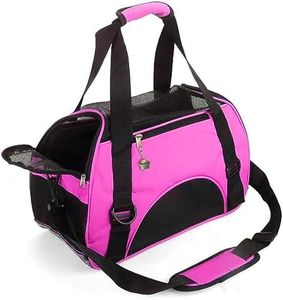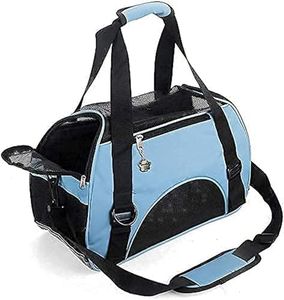We Use CookiesWe use cookies to enhance the security, performance,
functionality and for analytical and promotional activities. By continuing to browse this site you
are agreeing to our privacy policy
10 Best Cat Carrier
From leading brands and best sellers available on the web.Buying Guide for the Best Cat Carrier
Choosing the right cat carrier is essential for your cat’s comfort and safety whenever you need to travel or visit the vet. A good carrier keeps your cat secure, reduces stress, and makes the experience easier for both you and your pet. When selecting a carrier, consider your cat’s temperament, how you’ll use the carrier, and how easy it is to clean and carry. It's important to assess the features that will matter most for your cat’s wellbeing and for your convenience.SizeSize refers to the internal space of the carrier and determines how comfortably your cat can sit, stand, lie down, and turn around. Too small, and your cat will feel cramped and anxious; too big, and your cat might feel insecure and slide around. Carriers usually come in small, medium, and large sizes based on pet weight or measurements. If you have a kitten, consider their expected adult size. A good guide is to choose a carrier a few inches longer than your cat’s body, and tall enough for them to stand comfortably. If you plan longer trips, a bit more room is helpful for adding bedding or a small litter tray.
MaterialThe material of the carrier affects durability, ease of cleaning, weight, and ventilation. Common materials include hard plastic, soft-sided fabric, and sometimes metal or wicker. Hard plastic carriers are sturdy and easy to clean, making them ideal for nervous or strong cats, or airline travel. Soft-sided carriers are lighter and more comfortable to carry, but may be less secure for escape-prone cats. Metal crates offer excellent durability but are heavier. Pick the material based on your cat’s behavior and your usual travel needs.
VentilationVentilation refers to how well air can flow through the carrier, usually through mesh panels or holes. Good airflow is crucial for your cat’s comfort and prevents overheating. Carriers typically have ventilation on at least two sides, but more is better. For anxious cats, carriers with solid sides and limited but sufficient ventilation may feel more secure, while outgoing cats may prefer more visibility. Always ensure the airflow is adequate, especially if you’ll be traveling longer distances.
Doors and OpeningsDoors and openings determine how easily you can place your cat inside or remove them. Options include front-loading, top-loading, or both. Carriers with a top opening can make it easier to get reluctant or anxious cats inside, while front doors are more traditional and work well for calm cats. Some carriers also open from the side or have removable lids. Consider how cooperative your cat is and choose an access style that makes handling less stressful.
PortabilityPortability covers how easy the carrier is for you to carry and manage, which includes weight, handles, and straps. Lightweight carriers with ergonomic handles or shoulder straps are easier to transport, especially if you need to walk some distance or take public transportation. Hard carriers often have a fixed handle, while soft carriers may offer more carrying options. Choose a level of portability that fits the way you anticipate traveling with your cat, whether it’s by car, on foot, or public transport.
Security FeaturesSecurity features are design elements that keep your cat safely inside the carrier, such as locking mechanisms and sturdy zippers or latches. For escape-prone cats, look for double-lock doors or zippers that can’t be pawed open. If you’ll be traveling by air, carriers often need to meet specific security requirements. Pick security features based on your cat’s temperament and how you’ll use the carrier.
Ease of CleaningEase of cleaning means how simple it is to keep the carrier sanitary, which is important for your cat’s health. Hard plastic carriers usually have removable tops and smooth surfaces, making them easy to wipe down. Soft carriers may have washable liners or removable pads but can be harder to fully clean if soiled. If your cat gets nervous and has accidents, or if you travel frequently, prioritize easy-to-clean designs.
